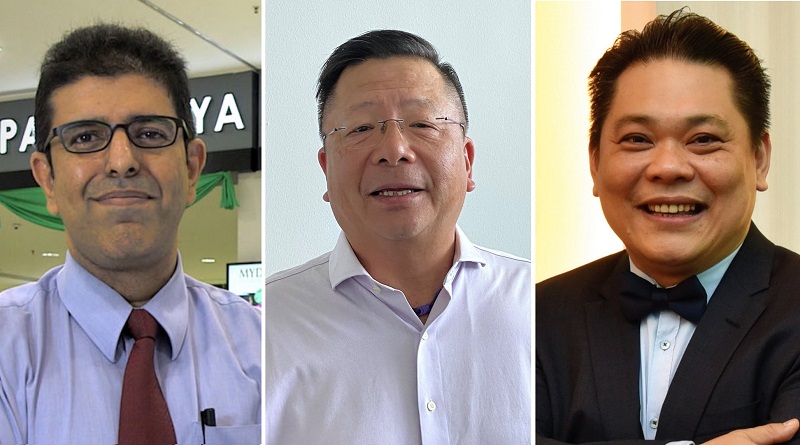Tackling food waste should be prioritised as, quite often, there is a lack of visibility across operations and suppliers with inability to predict demand.
SAP Malaysia managing director Hong Kok Cheong believes that digitisation is key to integration and collaboration across industry players.
“There is a growing need for safe, and fresh food and the answer is greater digitalisation efforts across the digital supply chain and gaining visibility into where products come from, how long they’ve been in transit, and when they’re set to expire,” said Hong.
He was speaking at a media roundtable called ‘A Growing ASEAN, A Hungry Population: Building Resilient and Sustainable Food Supply Chains’ held last Friday and attended by BizVantage Malaysia.
Hong explained that technology has a critical role in enabling future food security, as it paves the way for supply chain visibility and more efficient direction of food sources, especially fresh produce.
“Businesses need to have a ‘digital core’ to become intelligent enterprises with streamlined efficiency across operations, integrate with partners and suppliers,” said Hong. “This way there’s accountability to stakeholders and consumers – track and manage sustainability, coupled with the origin of food being produced.”
He also opined that food waste can be eliminated through a collective effort: “Businesses need better visibility to predict demand, consumer tastes and preferences and they can achieve this with intelligent insights.”
“This way, they can meet demand with optimum resources, and avoid overordering that can result in wastage,” Hong further said, citing buffets as an example. “It would be ideal if the expected crowd can be predicted based on analysis of historical data.”
“For retailers, one possibility to have less waste is better planning. The better you know what you are going to sell, the better you can plan your replenishment quantities, the less needs to be thrown away. Going away from manual reordering in the stores to an automated replenishment planning system based on true consumer demand is a potential step towards managing waste.”
Also participating at the roundtable were two SAP customers: Mydin Mohamed Holdings Bhd (MYDIN) IT director Malik Murad Ali and Chop Cheong Bee Sdn Bhd general manager Datuk Jeffrey Ng.
MYDIN: Technology not a cost but an investment for greater efficiencies and growth
MYDIN is today’s Malaysia’s largest homegrown Halal hypermarket and retail chain, with some 66 branches nationwide including Hypermarkets, Supermarkets, Emporiums, Bazaars, MYDIN Mart franchises, MyMart convenience stores, 7 MYDIN supermarkets and 2 premium stores known as SAM’S Grocery.
“Our products range from food line, household, soft-lines and hard-lines items. We were founded in August 1957, the same month as our Malaysia’s independence,” said Malik. MYDIN ventured into food upon establishment of its first supermarket in Selayang in 1997.
“At MYDIN, we run our business based on Halal concepts with great emphasis on honesty, sincerity and good discipline in all aspects of our business,” explained Malik. “Technology is the critical enabler to our culture of innovation. To us technology is not a cost but an investment for greater efficiencies and growth.”
“Take the movement control order as a result of COVID: Because we had invested in technology, we could quickly pivot to our e-commerce model which has proven to be extremely successful – so much so that it has opened up new revenue streams for us.”
Not resting on its laurels, MYDIN continue seeking out and embracing industry best practices. “Essentially it is about optimising the efficiency or effectiveness of operations and processes and that are implementable, replicable, transferable and adaptable across all our various stories.”
“Due to these best practices, our consumers are assured that food they are buying is fresh and produced in an honest way. At the end of the day, loyalty from customers comes from their confidence in products that are good and reliable,” added Malik.
Chop Cheong Bee: Innovating with technology to improve poultry farming methods
Chop Cheong Bee, meanwhile, is constantly innovating with technology to improve poultry farming methods and elevate production efficiency and output.
Datuk Jeffrey had established the company in 1997 and, today, it owns 14 various poultry farms throughout Melaka and supply some 1.5 million chickens monthly to consumers throughout the country.
“Traditionally, poultry farming was done manually, with plenty of people overseeing the poultry farms. This method poses numerous risks such as diseases and contact between human and chickens,” he said.
“We innovated with technology to improve poultry farming methods and to elevate the production efficiency and output. Our aim was to provide the best care possible for the chickens to develop properly while minimising the risks of poor production and mortality to reduce operational costs.”
Internet-of-Things (IoT) technologies have proven to be catalyst for the company to improve productivity and profits.
“From installed sensors, data captured can be retrieved in real-time; such as the amount of feeds and water consumed by the chickens, the suitable temperature for chickens, the ideal lighting exposure, the changes in chickens’ weight and so on,” said Datuk Jeffrey.
“Workers also do not need to be there physically to know all this information. With the utilisation of smartphones, the worker can just snap pictures or take videos of the farm, the houses and the chicken and immediately consult with the veterinary experts via text messages or video calls – making our operations more efficient than ever before.”
Chop Cheong Bee has also embraced SAP Business One (B1), a world renowned business management solution for connecting and streamlining processes to be more efficient and effective.

